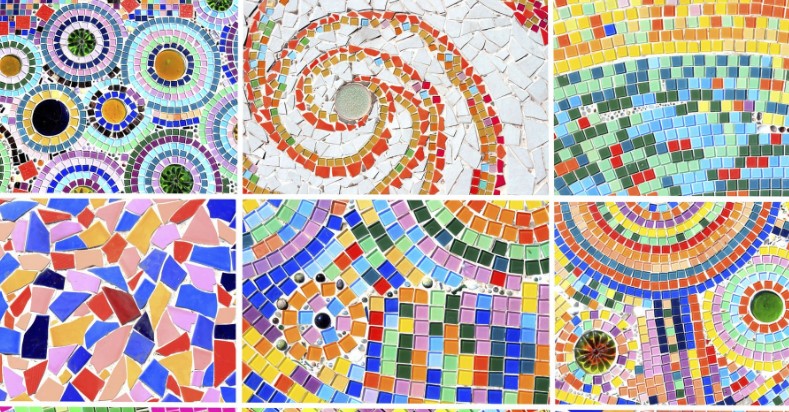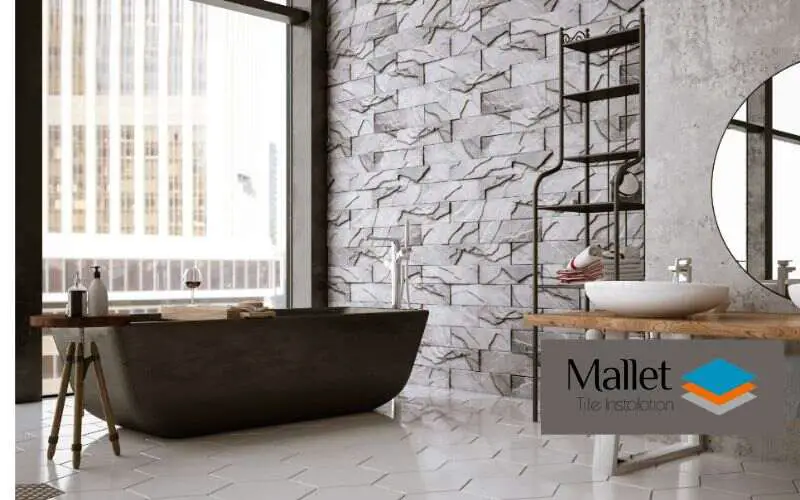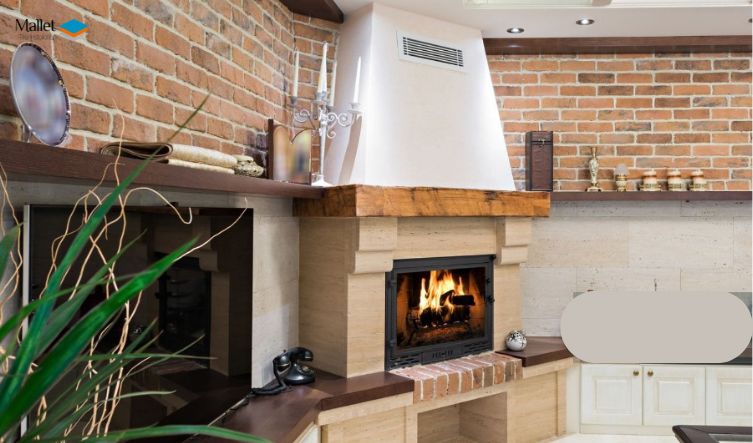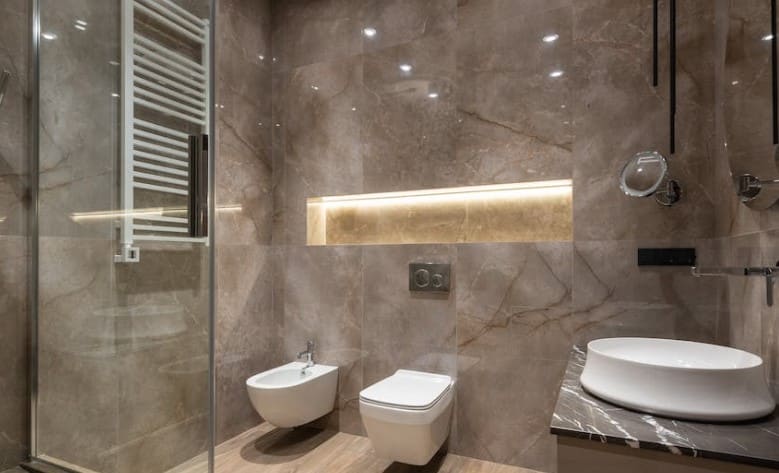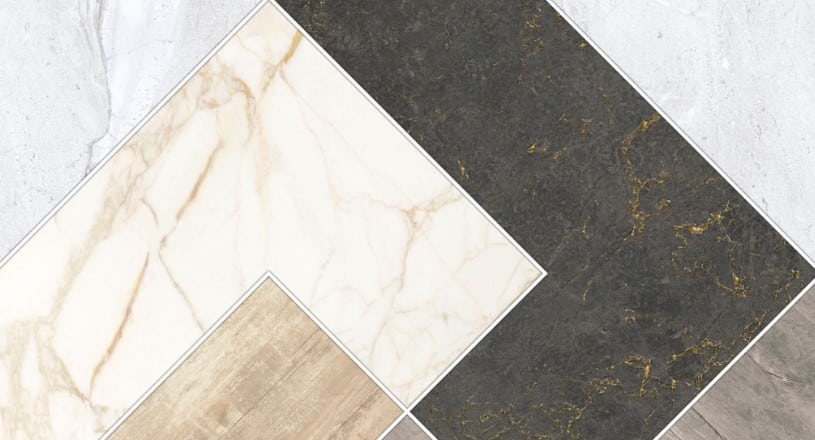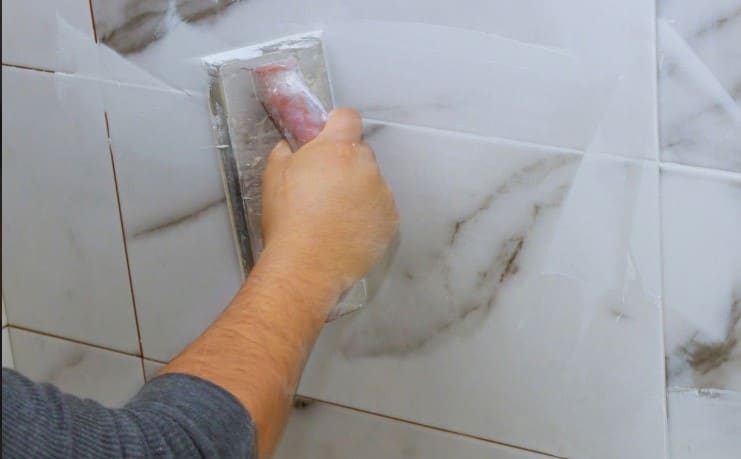At the center of every warm and inviting room, or even the ones that look super cool and elegant, there’s a small but mighty hero that might not first catch your eye: the shape of the tiles. Picking out the right shapes and arranging them with care isn’t just about making the room pretty. It’s like knowing a secret about how to make a space feel just right – whether you want it to be a cozy spot for reading, a lively place for parties, or a peaceful nook for tea.
By choosing and placing tiles in smart ways, you can change how a room feels without saying a word. It’s not just about good looks; it’s about making the room whisper, shout, or sing the vibe you want, using the simple magic of tile shapes.
Understanding the Influence of Tile Shapes
The Psychology Behind Visual Perception in Spaces
Our brains are like super-smart computers that pay a lot of attention to what we see around us. The things we look at, like the shapes, colors, and even how rough or smooth something is, can change how we feel, how we see the size of a room, and even help us decide what we like or don’t like. Now, think about the tiles on a floor or a wall.
It might seem like a small thing, but the shape of those tiles can make a room feel different. For example, square tiles might make a place feel more cozy and organized, while long, rectangular tiles can give the illusion that a room is bigger than it is.
The way tiles are laid out can add a special touch to a room, showing off its unique style without saying a word. So, when it comes to giving a room its personality, the shape of the tiles plays a big and interesting role.
Preview of the Impact of Different Tile Shapes
Each tile shape tells a different story. Square tiles speak in straight lines and sturdy structures, rectangular tiles draw the eye along their length, and hexagonal tiles invite us into a world of creativity and connection. The journey through the world of tile shapes is as fascinating as it is transformative.
The Basics of Tile Shapes and Room Dynamics
Square Tiles: The Classic Choice
Square tiles are like the secret heroes of the design world. Imagine walking into a room and feeling instantly calm because everything just fits together so well. That’s what these tiles do – they bring a sense of peace and balance to any space. Picture this: each side of the tile matches perfectly with its neighbors, creating a look that’s neat and orderly.
It’s like a math puzzle where everything adds up just right. Now, here’s a neat trick – when you place these tiles diagonally across a floor, they magically make the room look bigger. It’s like an optical illusion that turns a cramped space into one that feels more open and welcoming. This trick is super handy in smaller spots like bathrooms and kitchens, turning them into cozy corners where everything feels just right. Square tiles, with their simple charm, don’t just sit quietly in the background;
they can also set the stage, allowing other design pieces to shine. Imagine a room that greets you with open arms, thanks to these little squares that work together to create a feeling of harmony and space.
Rectangular Tiles: Elongating Spaces
When we walk into a room, how big or small it feels isn’t just about its actual size. The way tiles are placed on the floor can change how we see the space. Think about a long, narrow bathroom. If the tiles are laid down so they run in the same direction as the longest walls, the room can seem a bit wider than it is.
This trick has become super popular because of the subway tile trend. These rectangular tiles, like the ones you see in subway stations, are usually put up in a brick pattern. This doesn’t just make walls look cool and classic; it also makes the room feel bigger. To make things even more interesting, there are patterns like herringbone and basketweave.
They add fun details to the floor or walls and can make a room feel more open and inviting. By playing with tile patterns, we can make spaces feel just right.
Hexagonal Tiles: Adding a Modern Twist
Have you ever walked into a room and instantly felt its vibe? That’s the magic hexagonal tiles can create. Imagine stepping into a kitchen where the floor seems to dance with playful patterns or a bathroom that feels like an art gallery, all thanks to these six-sided wonders. These tiles are not just about looking pretty; they make spaces feel connected.
In homes with open layouts, hexagonal tiles can guide you from one area to another without needing walls or signs. It’s like they’re whispering, “This way to the living room” or “Step into the kitchen.” And for places like entryways, which are the first spots we see, hexagonal tiles can make them unforgettable.
Who wouldn’t love coming home to that?
So, when ordinary squares and rectangles just won’t do, hexagonal tiles are there to sprinkle some fun and flair, turning everyday spaces into visual celebrations.
Color and Texture: The Complementary Factors
How Colors Influence Tile Shape Perception
When choosing tiles for a room, the colors you pick can have a big impact on how the space feels. Light-colored tiles, like soft whites or gentle creams, can make a room seem bigger and more open.
If a space has lots of light tiles, it often feels airy, like there’s more room to breathe. On the other hand, dark tiles, such as deep browns or rich blacks, can make a room feel cozy and close, kind of like a warm hug. It’s not just about the color, though.
The size of the tiles matters too. Big tiles can make even dark colors feel a bit lighter in a room, so it doesn’t feel too small. Now, about how tiles match or don’t match in color. If all your tiles look the same, it can pull the whole room together, making everything look neat.
But if you mix up the colors of your tiles, you can make certain areas stand out, give the room some fun character, or even mark out different spaces without needing walls.
So, when picking tiles, think about what feeling you want in the room and how you can use color and size to make it happen.
Texture’s Subtle Impact on Tile Appearance
Matte vs. Glossy: A Visual Dilemma
When you look at tiles, how they feel and how they look can make a big difference in a room. Think about it like this: if a tile installation has a matte finish, it doesn’t shine and makes the light sort of soak into it. This can make the shape of the tile less flashy, giving a more toned-down effect.
On the other hand, tiles that are glossy catch the light and bounce it back, making the shapes stand out more, and everything looks a bit brighter and clearer. Now, besides just how they look, the way tiles feel is also important. If the surface of a tile is rough, it can give a room a more outdoorsy or old-fashioned vibe, kind of like being in a cozy cabin.
But if the tile is smooth, it can make a place look super modern and sleek, like something out of a cool, futuristic movie. So, both the light effect from the finish and the feel of the texture work together to set the mood of a room, kind of like how the music in a movie tells you whether to feel happy or scared.
Strategic Placement and Installation Tips
Maximizing Small Spaces with Tile Orientation
When you have a small room and you want it to look bigger, there’s a cool trick you can try – it’s called the diagonal trick. Imagine your room is like a chessboard. Normally, you might put your furniture like chess pieces, straight and parallel to the walls.
But here’s the trick: instead of lining everything up straight, you place your furniture at an angle, like setting it across the squares instead of inside just one. This simple change can make magic happen. It fools your eyes into thinking there’s more space than there is. It’s like when you’re walking down a path that zigzags; it feels longer than a path that goes straight.
By angling your furniture, it opens up the room and makes it feel less boxed in, giving you the feeling of having more room to move and breathe. So, if you want your small space to feel bigger, try tilting your furniture a bit. It’s easy to do and can make a big difference in how your room feels.
Making Large Rooms Feel Cozier
When you’re making a big room feel cozy, the tiles you choose can make all the difference. Imagine your large living room or kitchen and how you want it to feel warm and inviting. Instead of going for big tiles, try thinking about smaller ones or ones with cool designs on them.
These kinds of tiles can help break up the space, making it feel like a bunch of smaller, comfy spots instead of one big area. It’s kind of like when you use a small rug to make a seating area feel more like its own little island. This trick works well in bigger spaces where you want to add some charm and personality.
So, when you’re picking out tiles for a large room, remember that smaller, patterned ones might be just what you need to give it that snug, engaging vibe you’re going for.
Real-World Applications and Inspirational Ideas
Case Studies: Before and After Transformations
When we look around at buildings, streets, and homes, we can see how much tile shapes can change the way we feel about a place. Think about walking into a room with bright, colorful tiles arranged in fun patterns on the floor—doesn’t it make you feel happy and welcome?
These tile designs do more than just look pretty. They’re also made to last a long time and are easy to take care of. This means that while we enjoy their beauty, we don’t have to worry too much about them getting worn out or needing to clean them all the time.
By exploring real projects where these tiles are used, we learn how choosing the right shape and design can make a big difference in a space. This doesn’t only make our eyes happy but also makes practical sense by saving time and effort in keeping them looking good.
So, next time you see a place with really cool tiles, remember there’s a lot of thought that went into making that space both beautiful and smart.
Expert Advice: Innovating with Tiles
When you chat with architects and interior designers, it’s like opening a treasure chest full of creative ideas. These experts are always keeping up with the latest and greatest in design, and by talking to them, homeowners can get inspired to try something new.
Take tiles, for example. Instead of sticking to the usual square or rectangle shapes, why not mix things up? Maybe you could use hexagons or fish scales to add a playful touch to your bathroom. Or perhaps a chevron pattern could make your kitchen backsplash pop.
The point is, that there’s a whole world of shapes and patterns out there waiting to be explored. By being open to these fresh ideas, you can make your home stand out in a way that’s uniquely you.
So, next time you’re thinking about making a change at home, consider having a chat with a design pro. You might just be surprised at what you come up with together!
Conclusion
Embarking on the journey through the world of tile shapes is like diving into a sea of endless possibilities where design holds the power to change how we see and feel about our spaces. Like magic, picking just the right shape, color, and texture of tiles can turn a plain room into something truly special.
It’s not just about making a place look nicer; it’s about creating a vibe that fits you just right. When you’re thinking about fixing up an old spot or starting from scratch with a new one, remember how these little pieces can do big things for your home’s feel.
The coolest part? You get to mix and match until you find the perfect fit that tells your story the best. So, go ahead and play around – the world of tiles is your canvas. Happy tiling and here’s to making your space a reflection of your unique style!
FAQs
Q: Can tile shape and size make a room look bigger or smaller?
Absolutely! The size, shape, and placement of tiles can significantly alter the perception of a room’s size. For example, large-format tiles can make a small room appear bigger, while the orientation of rectangular tiles can influence its perceived width or length.
Q: Are certain tile shapes better suited for specific rooms?
Yes, certain shapes work better in different spaces depending on the room’s size and function. Square and rectangular tiles are versatile for almost any room, while hexagonal tiles can add a unique touch to spaces like kitchens and bathrooms.
Q: How does lighting affect the perception of tile shapes and colors?
Lighting can enhance or diminish the impact of tile colors and shapes. Bright, natural lighting will make light-colored tiles look more vibrant and can enhance the shape’s visual impact, while dim lighting may require careful selection of tile color and texture to achieve the desired effect.
Q: Can mixing different tile shapes in one area work?
Mixing tile shapes can create a dynamic and visually interesting space, but it’s important to maintain a cohesive design through consistent color palettes or textures to avoid a cluttered look.
Q: What are some common mistakes to avoid when choosing tile shapes for a room?
A common mistake is not considering the scale of the tile about the room size—large tiles in a tiny room can overwhelm the space, and similarly, small tiles in a large space can look busy. Another mistake is overlooking the importance of grout color and width, which can significantly affect the overall look.

